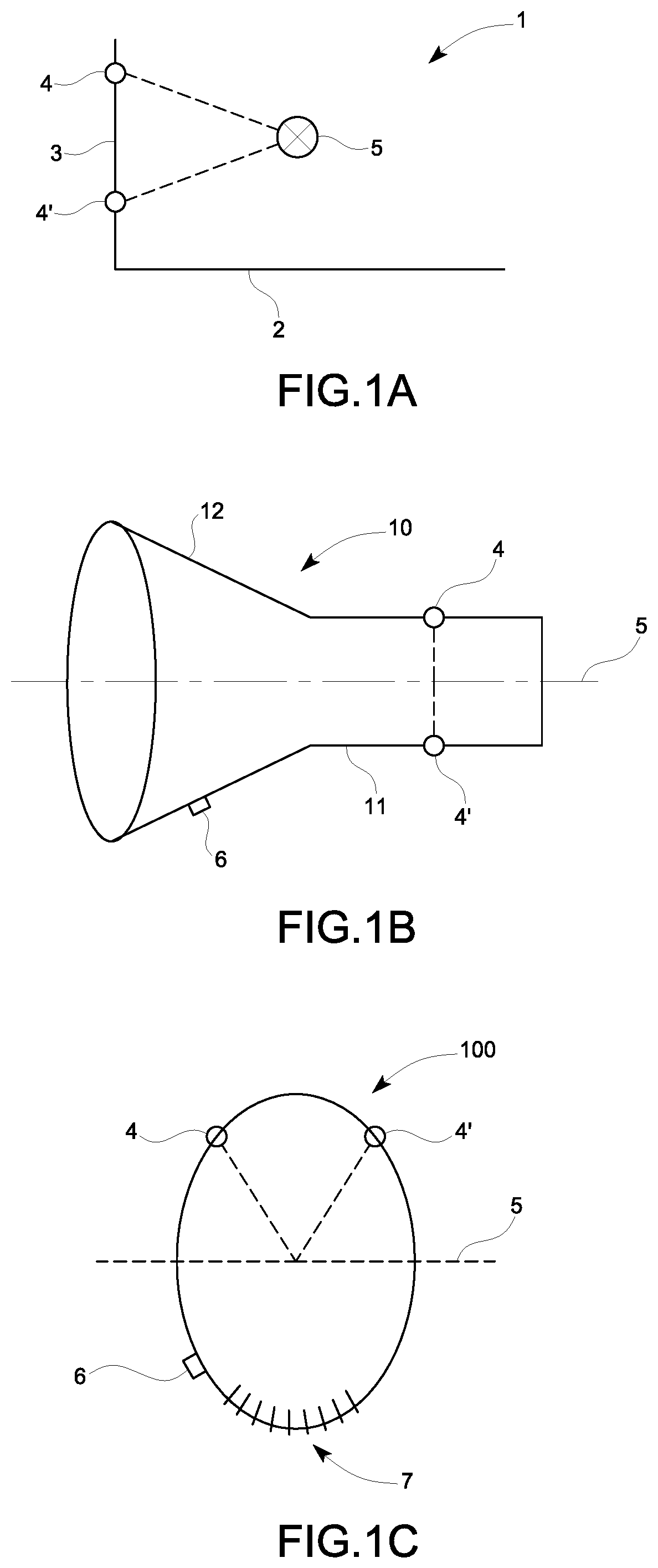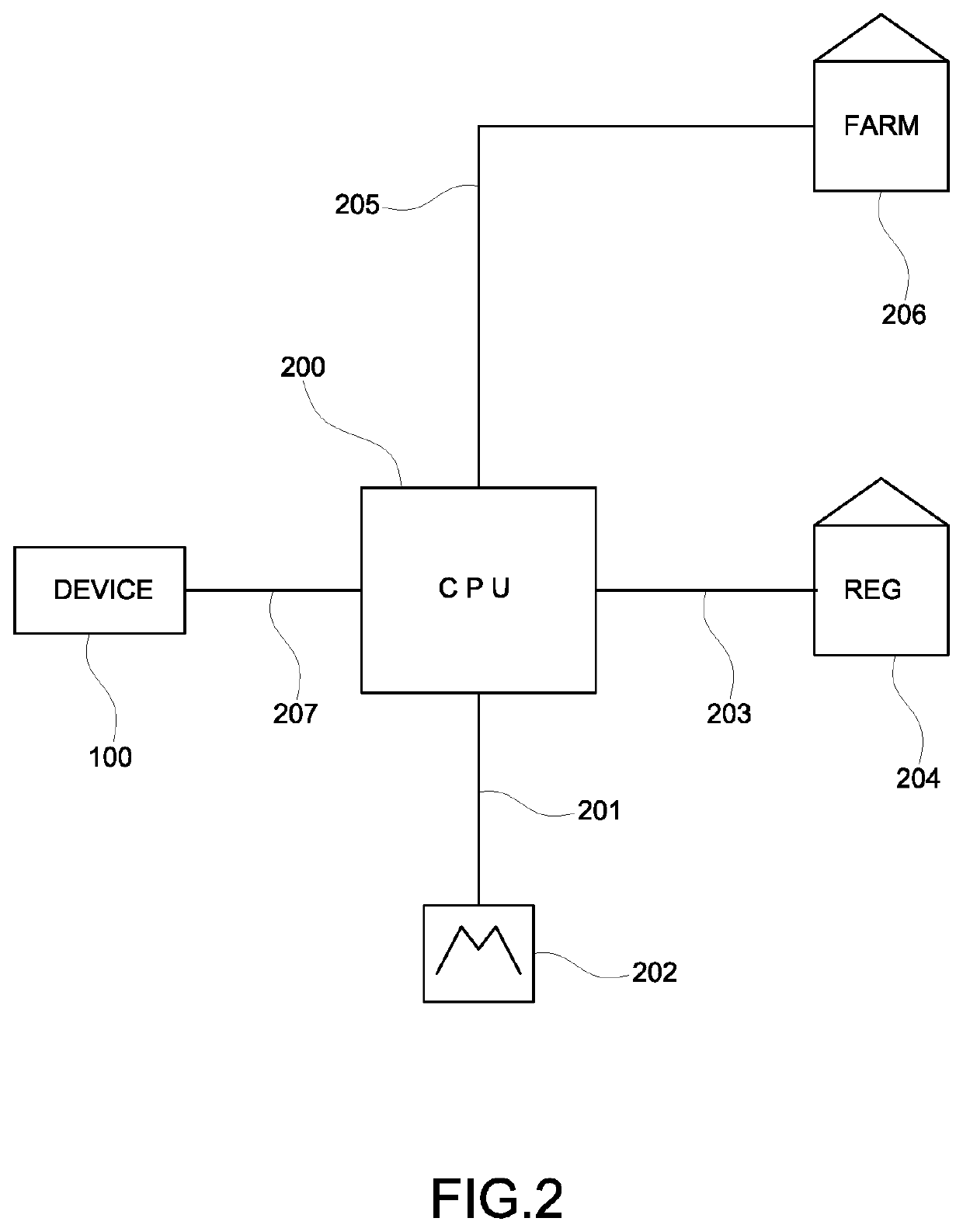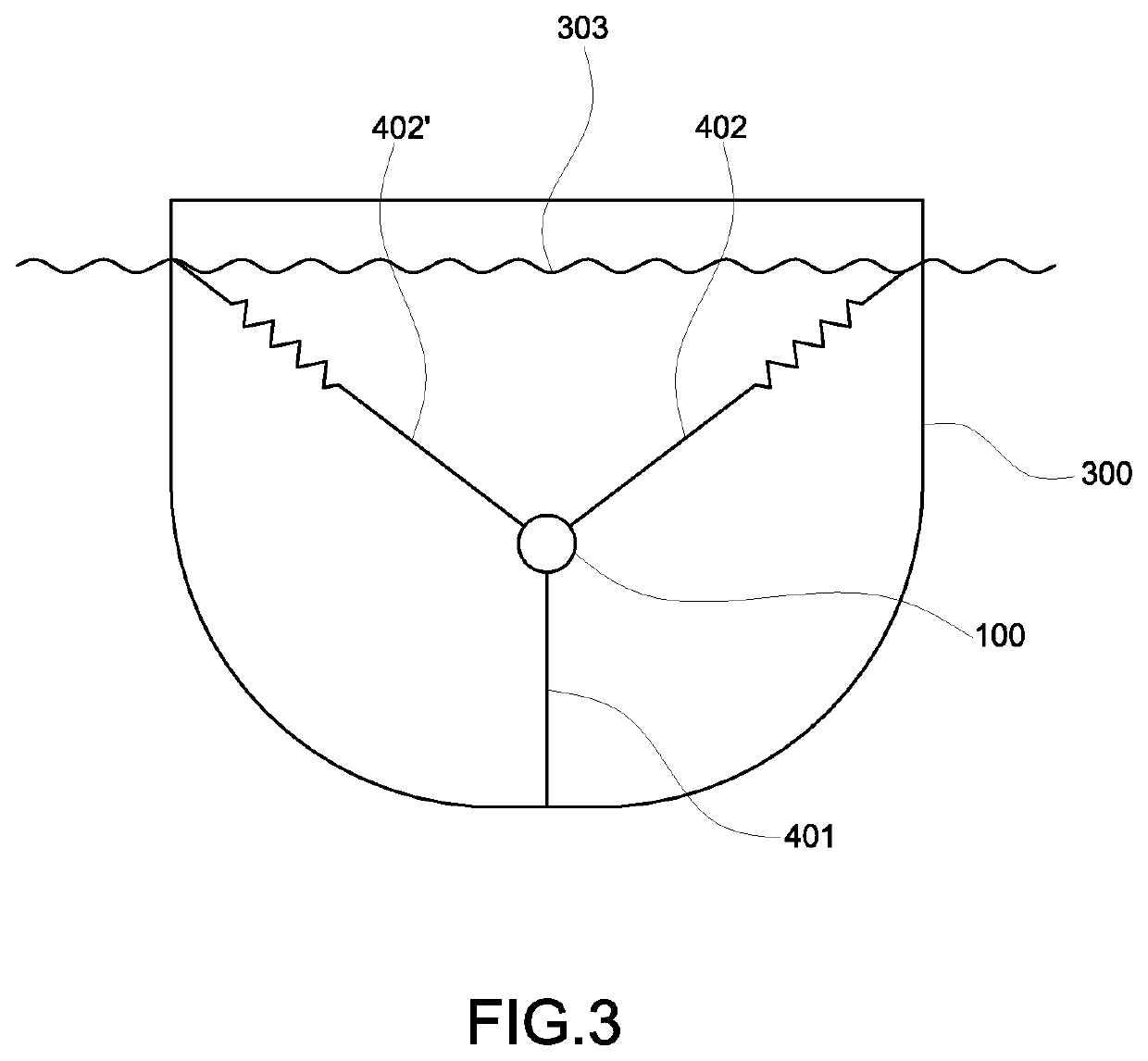Method for automatic sea lice monitoring in salmon aquaculture
a technology for automatic monitoring and sea lice, applied in pisciculture, aquaria, climate change adaptation, etc., can solve the problems of difficult automatic monitoring of sea lice, fish do not, and angle and distance may vary considerably
- Summary
- Abstract
- Description
- Claims
- Application Information
AI Technical Summary
Benefits of technology
Problems solved by technology
Method used
Image
Examples
examples
[0033]FIG. 1 shows devices for use in the present method.
[0034]FIG. 2 schematically shows a system according to the invention.
[0035]FIG. 3 shows a device according to the invention, spatially fixed with regard to the walls of a sea pen for cultivating salmons.
FIG. 1
[0036]FIG. 1 shows three devices for use in the present method. In FIG. 1A a simple open triangle 1 is depicted, comprising two legs 2 and 3, having a length of about 50 cm. Within the try square of the triangle, imaging track 5 (which is viewed from the back in this figure) is depicted. Cameras 4 and 4′ are directed to this track. The triangle legs will typically prevent that salmons will swim very close to the legs, they will keep a certain distance. This distance is such that it coincides with the distance between the track and the two legs. This way, occasionally a salmon will swim along the imaging track. Upon passing the cameras, one or more pictures (or a short film) will be taken for image analysis.
[0037]An improv...
PUM
 Login to View More
Login to View More Abstract
Description
Claims
Application Information
 Login to View More
Login to View More - R&D
- Intellectual Property
- Life Sciences
- Materials
- Tech Scout
- Unparalleled Data Quality
- Higher Quality Content
- 60% Fewer Hallucinations
Browse by: Latest US Patents, China's latest patents, Technical Efficacy Thesaurus, Application Domain, Technology Topic, Popular Technical Reports.
© 2025 PatSnap. All rights reserved.Legal|Privacy policy|Modern Slavery Act Transparency Statement|Sitemap|About US| Contact US: help@patsnap.com



